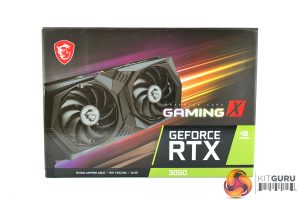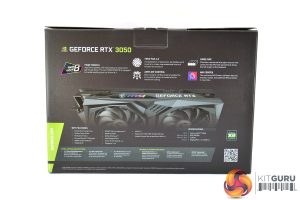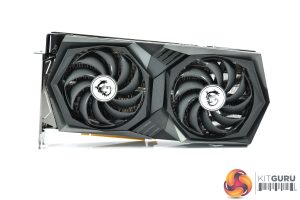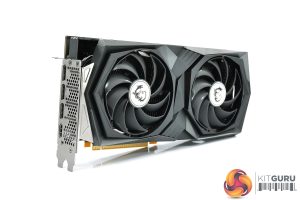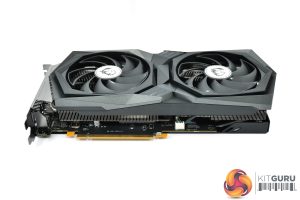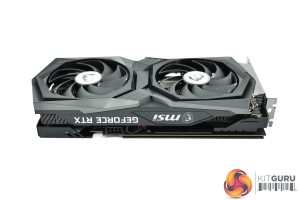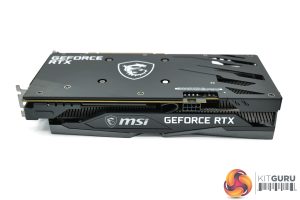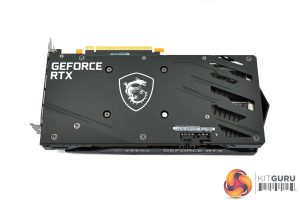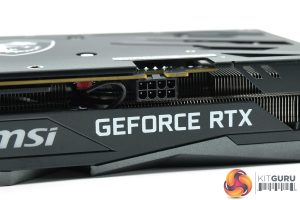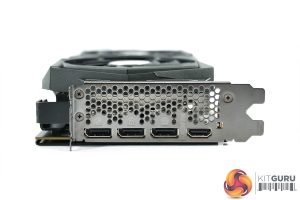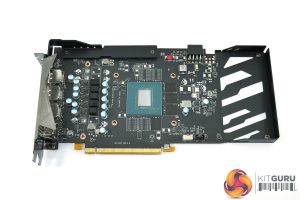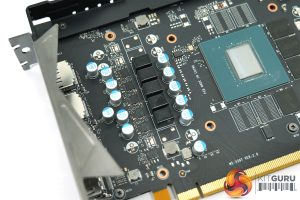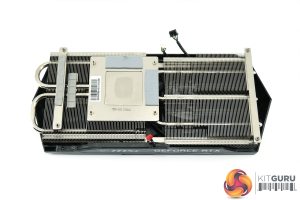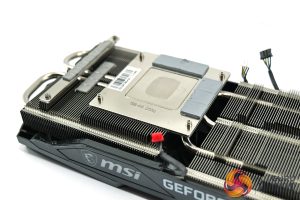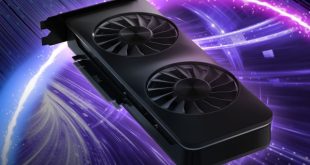Looking now at the MSI RTX 3050 Gaming X, this card ships in a mostly dark brown box, but the front has a large image of the card itself as well as some yellow and purple accenting. The back of the box highlights a handful of the card's design features.
The overall design of the Gaming X will be immediately familiar to anyone who's already seen MSI's other current-gen Gaming-series cards, like this RTX 3070. The design language is consistent across models, with a black and dark-grey shroud that is made of plastic.
Two 100mm fans dominate the front of the card too, with these using MSI's Torx 4.0 design. This sees two fan blades connected to one another with an outer-ring, designed to focus airflow down and through the heatsink – not dissimilar to ASUS' design on its current-gen cards.
The sizing of this card is potentially problematic. Granted, it's not a triple-fan model, but it still measures in at 278 x 130 x 49mm. To put that into perspective, Nvidia's RTX 3080 Ti Founders Edition measures 285 x 112 x 40mm, meaning the Gaming X is actually thicker and taller, while only coming in 7mm shorter in length.
Considering the RTX 3080 Ti draws over 200W more power than the RTX 3050, the word ‘overkill' certainly springs to mind, but we will reserve final judgement until we've looked at the card's thermals and noise level.
On the side of the shroud, we find the MSI logo, which acts as the only RGB zone on the card. A metal backplate is also present, with a well-sized MSI dragon logo taking pride of place in the centre of the backplate. A few cutouts are visible towards the end of the card, to allow some airflow to pass directly through the heatsink.
Power is supplied by a single 8-pin PCIe connector, while display outputs again consist of 3x DisplayPort 1.4 and 1x HDMI 2.1.
Moving to look at the PCB, we can see MSI has taken things a step further with the GPU VRM, which is a 5-phase design here – every other RTX 3050 card we have looked at so far uses a four-phase VRM. The memory VRM remains single-phase however.
14Gbps memory modules from Micron are used, carrying the D9ZPM model code.
Then for the heatsink, it's an impressive-looking piece of engineering. It features two large and fairly dense finstacks, with a total of three heatpipes. Both the GPU and memory contact with a baseplate.
Be sure to check out our sponsors store EKWB here
 KitGuru KitGuru.net – Tech News | Hardware News | Hardware Reviews | IOS | Mobile | Gaming | Graphics Cards
KitGuru KitGuru.net – Tech News | Hardware News | Hardware Reviews | IOS | Mobile | Gaming | Graphics Cards


